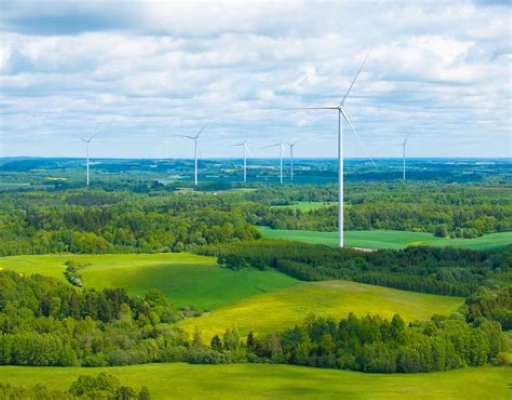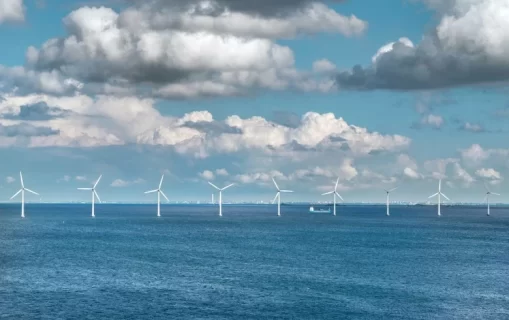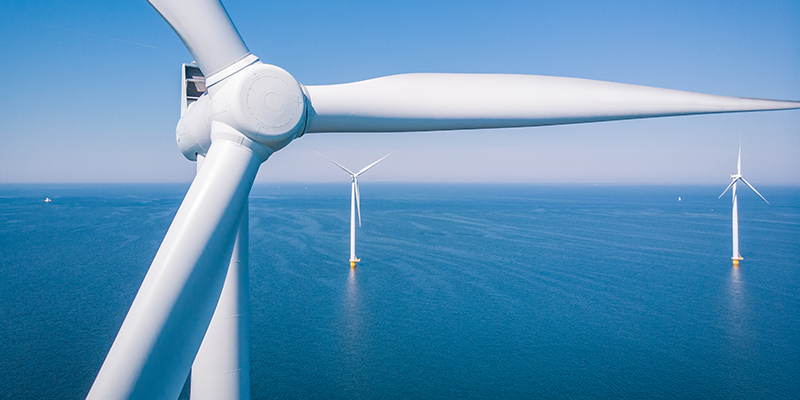Updated October 8, 2025 – NERC decides that the tender is deemed null and void. This is after only one participant, Ignitis, submitted its bid. This situation replicates what happened to the same second wind tender in April 2024.
Reported October 7, 2025 – Ignitis Group has submitted bid in Lithuania’s relaunched 700 MW offshore wind tender following the cancellation of a similar process in April 2024. The original tender, opened in early 2024, was cancelled after only one bid was submitted. This was not enough under the country’s rules for a valid competition.
In mid-2025, the government reopened the second 700 MW tender under revised conditions that include the option of state support via a Contract for Difference (CfD). Ignitis Group submitted a bid to develop the project through its subsidiary, seeking a tariff in the range of €75.45-€125.74 per megawatt-hour. This range is also partially indexed to cost fluctuations.
The relaunch aims to attract more bidders, reduce risk, and ensure a competitive outcome. Stakeholders also note that awarding this project is crucial for Lithuania’s ambitions in renewables, energy security, and lowering emissions. The decision on the winning bid is expected by the end of 2025, with commercial operations targeting 2030.
That first 700 MW tender in 2023 had been awarded successfully to Ignitis and Ocean Winds under a subsidy-free model. The tender also marked Lithuania’s first major move into large-scale offshore wind. The onshore wind project in the Kelme wind farm in Lithuania, was also recently commissioned by developer, Ignitis.

Lithuania Launches Second 700 MW Wind Tender
Reported January 17, 2024 – Lithuania’s National Energy Regulatory Council (NERC) has initiated the bidding process on a delayed tender that will award a 700-MW offshore project set to create the country’s second wind farm in the Baltic Sea.
Tender Timeline
The process was launched by the State Energy Regulatory Council on January 15. Participants will have 90 days to register and submit their documents till April 15. Evaluation will follow until, latest, May 27.
A provisional winner will be announced by the end of May. This is after the committee has compiled a list of viable candidates who meet the tender requirements.
The final confirmation will be announced at the beginning of August. This is after the selected developer’s compliance with national security interests is verified. The country’s second offshore wind farm is expected to be operational as soon as 2028.
Companies seeking to develop the site also have to meet a range of requirements. This includes experience in developing offshore projects, financial performance and compliance with national security.
Additionally, the bid will be awarded to the participant offering the highest development fee or requesting the lowest annual electricity generation incentive from the state at the lowest price. They will also be eligible for a 15 year state incentive.
Project Location
The proposed turbines will have a height of 350 meters. An offshore wind park will also be installed within a 135 square kilometer area within the Baltic Sea. This is about 30 km from Palanga off the Lithuania coast, and 2 km off the boundary of Natura 2000 protected area.

Lithuania Second Wind Tender: Costs
Under the tender regulations, the selected developer will have the right to develop the project with or without state subsidies. The winner will also have access to state aid for over 15 years in the form of variable premium. This is under a two-way contract for difference (CfD) as a result of a EUR 193 million scheme approved by the European Commission the previous year.
About EUR 5 million will also have to be earmarked by the developer for environmental protection. On the other hand, EUR 3 million will also be contributed to municipalities bordering the maritime territory annually.
Lithuania Second Wind Tender: Terms and Condition
The successful developer for the park will not have to carry out offshore surveys and other activities necessary for the development and construction of the infrastructure. They will also not be required to even prepare an Environmental Impact Assessment as this will be carried out by the state.
Once the site is built, the developer will be obliged to make an annual contribution (€1 per 1 MWh of electricity generated) to the communities in the vicinity of the project.
In preparation for the tender, the minimum possible installed capacity of the proposed offshore wind farm has also been increased. The projects are now required to have at least 700 MW as opposed to the initially set 580 MW. However, the maximum capacity still remains at 700 MW.
The offshore wind tenders by Lithuania are markedly there to increase electricity generation from renewable energy to 70 per cent of the total domestic consumption by 2030.
Challenges Faced
This second offshore wind tender was initially meant to kick off in September 2023. However it was postponed to January 2024 due to the then prevailing economic conditions. This explains the delay brought about by unstable economic environment. It also highlights the plight of renewables in an industry fazed by policies that may not always be pro-renewables.
Also read:
Vestas to establish offshore wind blade factory in Poland

